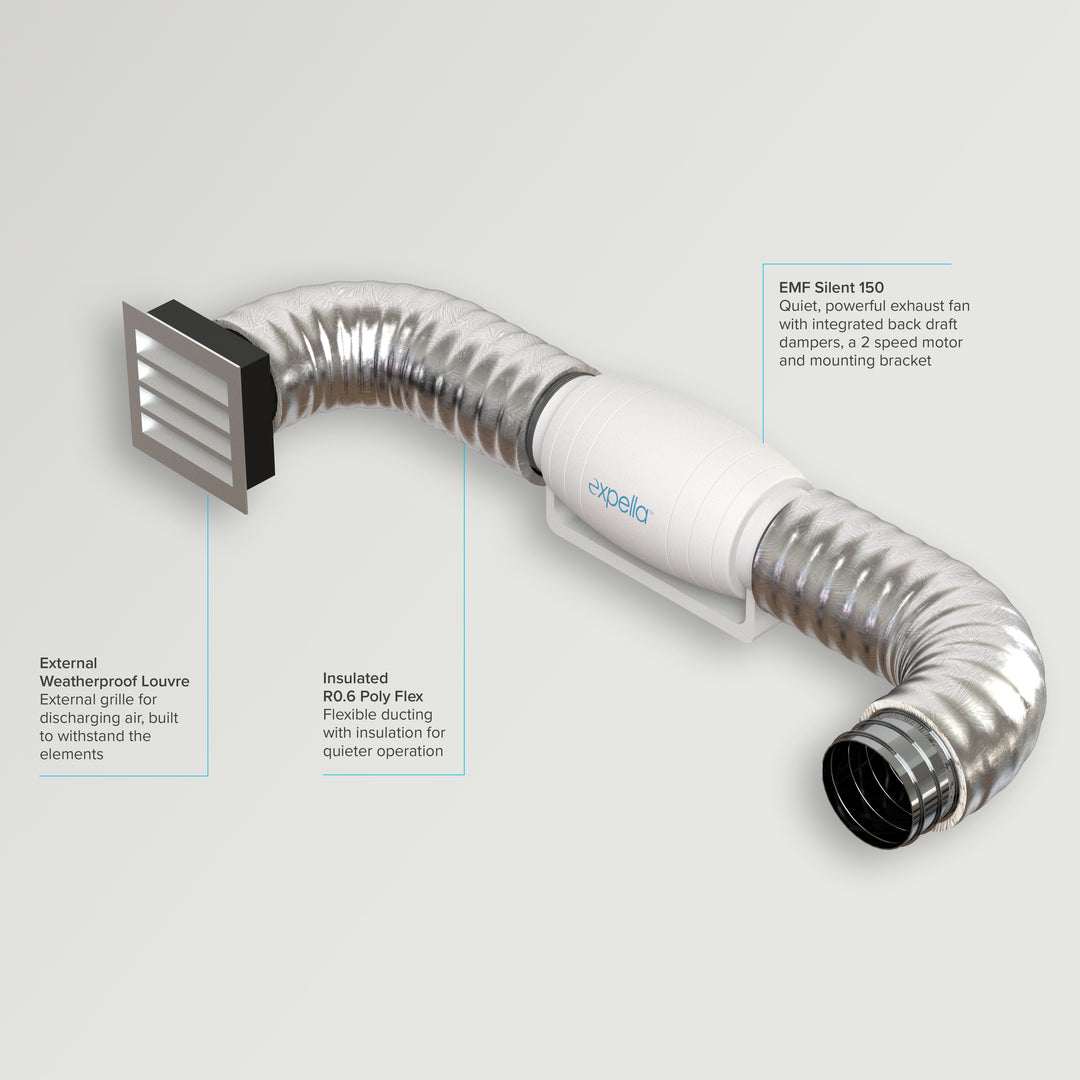Reduce allergies and asthma
- For some, allergies can be triggered by a change in seasons, others experience allergy and asthma symptoms from a range of irritants within the home.
- Dust mites, mould, pets and high humidity levels are all common household irritants
- Practicing good hygiene and ensuring effective ventilation throughout the home are some ways to help manage allergy and asthma symptoms
For anyone who experiences allergies or asthma, avoiding potential triggers is important to their health and wellbeing. According to the Australian Institute of Health and Welfare, 11% of the Australian population has asthma, which is about 2.5 million people.
For some, allergies are seasonal, with symptoms flaring up with the change of seasons. For many, the cause of allergy and asthma symptoms can come from a range of irritants within the home.
Common household irritants
Dust mites
The household dust mite is present in every home, and can trigger allergy and asthma symptoms in those who are susceptible. Dust mites are found in mattresses, bedding, carpet, upholstered furniture and even soft toys. They feed mainly on human skin scale and absorb the water they need directly from the air when relative humidity reaches 45-50%. The Australian Building Codes Board says that dust mites need exposure to this level of humidity for only an hour each day to become fully hydrated and at higher levels, they feed and multiply more rapidly.
By washing linen regularly at a high temperature, practicing good home hygiene and reducing relative humidity with effective ventilation, the home environment becomes less viable to dust mites. Expella’s whole house Heat Recovery ventilation system is an excellent way to ensure clean filtered air is continually circulated throughout the home. Expella’s Air Quality Monitor is another helpful tool to monitor air in the home, which alerts you when humidity, temperature, carbon dioxide, formaldehyde, VOCs and particulate matter reach suboptimal levels.
Mould
The impact of mould in the home is serious and far-reaching. Mould can be harmful to your health, with symptoms ranging from nasal congestion, coughing, wheezing, eye and skin irritations. People with weakened immune systems and existing respiratory issues or asthma can be particularly susceptible to mould exposure.
Mould grows in poorly ventilated spaces with excess moisture, such as bathrooms, laundries and wardrobes. Take a look at our article on How to Prevent Condensation and Mould.
Pets
Pet allergies are very common and our furry friends can be responsible for a range of allergy and asthma symptoms. Contrary to what many people think, allergies are not in fact caused by fur but pet dander – which is the animal’s dead skin cells that flake off. Animal saliva is another common trigger for allergies, which can stick to the animal’s fur when it cleans itself.
Keeping pets out of the bedroom and away from upholstered surfaces, and frequently washing and brushing your pet outside, are just a couple of ways to help manage allergy triggers in the home.
High humidity levels
People with asthma often report difficulty breathing in high humidity environments, the moist air can feel heavy and harder to breathe. Relative humidity describes how much water vapour is in the air and The National Asthma Council Australia says that most people find a relative humidity between 30 to 60 percent the most comfortable, with indoor humidity ideally between 30 to 50 percent. Expella has a range of ventilation kits to reduce excess moisture and humidity in the home. Again, Expella’s Air Quality Monitor is an effective way of measuring the humidity levels in your home, which alerts you when levels are too high or low.
High levels of humidity in the home also create an ideal environment for dust mites and mould – two of the most common triggers for allergies and asthma.








